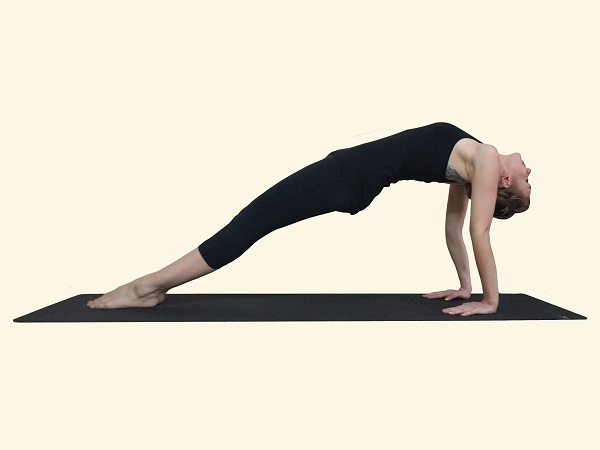Translation: Purv- east; uttan- intense stretch; asana- posture.
This pose is known by many names like upward plank pose, setuasana (setu means bridge), and Intense east stretch.
Intense east stretch, got this name, as yoga practice is generally done at dawn facing the sun. The front of the body is therefore referred to as the east and the back is the west. (Paschimottanasana– paschim means west)
Steps:

- Start in Dandasana, sitting up with your feet stretched out in front of you.
- Place the palms on the ground about one forearms length behind the hips (you can place the fingers away from your body or towards the body, whichever is more comfortable, but fingers pointed towards the body works more on opening the chest and the upper back)
- Inhale, raise the hips and lift the body upwards, relax the neck.
- Point the toes away from the body trying to get the feet flat on the ground, and keep the arms and the legs straight.
- Keep the buttocks and pelvic floor muscles engaged.
- Hold the position for about 15 to 30 seconds breathing normally.
- Exhale, and lower the hips down on the floor.
Benefits:
- Strengthens the wrists, thighs, and shoulders
- Stretches the ankles, shoulder, and chest.
- Tones the lumbar region of the spine and Achilles tendons.
- Can reduce symptoms of fatigue and depression
- Improves balance
- Helps to reduce rounded shoulders
- Increases core strength
Contraindications:
- High blood pressure
- Heart disease
- Cervical spondylitis
- Hernia,
- Stomach ulcers
- Neck injury
Looking for any other posture? Explore our Yoga asana library.